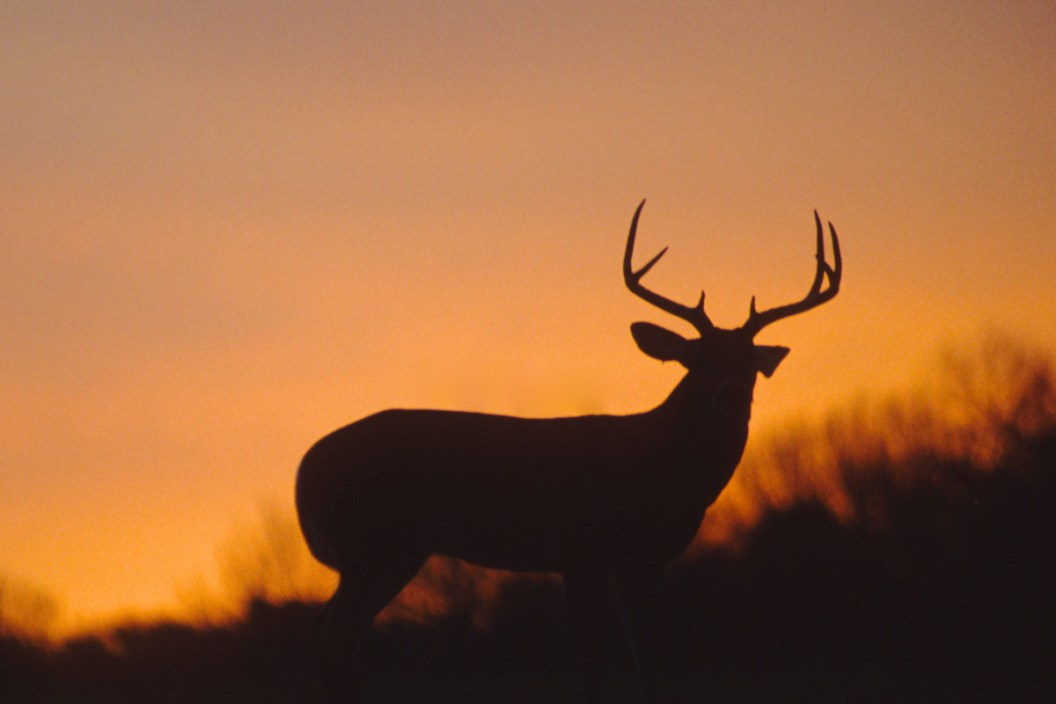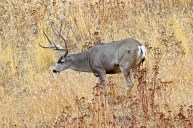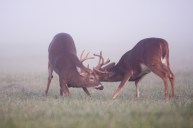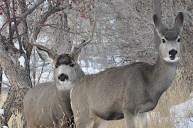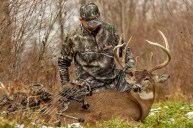Hunters new and experienced know the frustrations of trying to catch a mature buck off-guard during the daylight hours. At times, it seems nearly impossible to do, especially in areas with high hunting pressure, and your trail cameras only show that big buck visits at night. It has led more than one hunter to conclude that deer, or at the very least particular bucks, are completely nocturnal animals who limit their daytime activity to the offseasons.
Well, this may not be entirely accurate. Scientists have debunked the notion of deer being nocturnal animals. You might be surprised to learn deer move at all times of the day. You're likely not seeing this activity because you're not hunting the right place.
Are Deer Nocturnal?
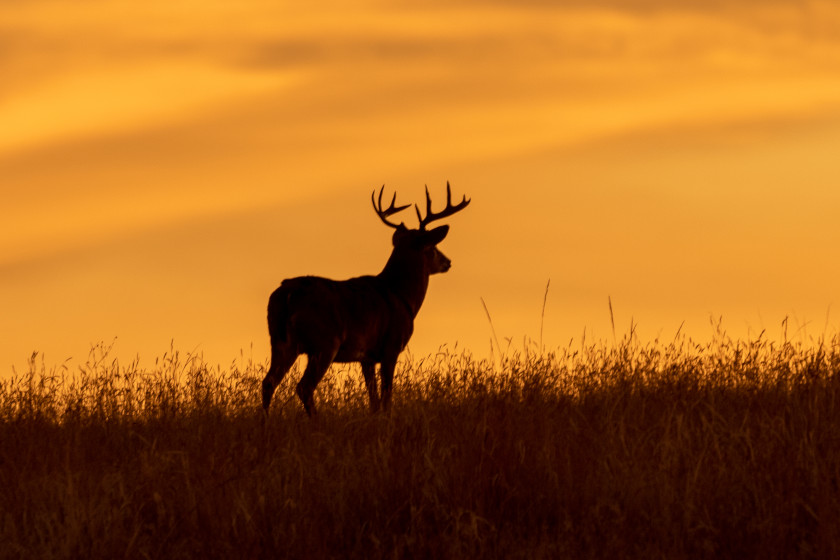
twildlife via Getty Images
Let's debunk this one right off the bat. According to the Maine Department of Inland Fisheries and Wildlife, deer usually follow crepuscular activity patterns. Crepuscular animals are most active in the twilight hours of dawn and dusk. Many scientists classify them as diurnal animals, creatures that are active during the day and sleep at night. However, if there's one thing we've learned from years of hunting, several factors affect deer movement.
For instance, weather conditions play a considerable part. Have you ever hunted food sources before a big snowstorm moved into the area overnight? The odds are that the deer will hit that food hard during the daylight hours in advance of the coming storm. They always seem to sense these things coming, and they prepare accordingly. On the flip side, if the weather is hot in the early parts of the fall, many deer restrict their daytime movements to the evening and morning hours only. There may also be an increase in nighttime activity. Like humans, deer don't like getting overheated; sometimes, the night is the best way to escape the heat.
When it comes to the rut, all bets are off. Most bucks will significantly increase their home range in search of female deer. They'll also sometimes throw caution to the wind if they find a hot doe. In 2013, I bagged a gnarly 10-pointer around 10 a.m. on the opening day of Michigan's firearms season. It was a buck neither my uncle nor myself had seen before. We suspect he wandered in from some other area miles away. It wouldn't be the first time that's happened to us. The deer, an older buck, never knew I was there as he tended to a doe only 25 yards away from my blind broadside. One shot through the lungs expired less than 10 yards from where he originally stood. This spur in movement makes fall the most exciting time to hunt!
Over the years, I've noticed deer movements during all times during the daylight hours on both my trail cameras and all-day sits in the stand. While I have more sightings during the early morning and evening hours, the truth is that big buck could decide to move at any time of the day. And it turns out the decision to move or not seems to be an individual tendency more than a herd-wide trend.
Busting the Myth of the Nocturnal Buck
Many deer hunters get photos of a mature buck in their area at night and then assume the deer is strictly a nocturnal animal. This is a mistake. Science paints a very different picture. Mississippi State University has an entire deer ecology and management lab where they do nothing but study deer behavior. In a fascinating interview with the Hunting Public, which we've embedded above, the program's researchers said the deer movements they've gathered from collared deer surveys show many bucks do spend a lot of time in bedding areas. However, they also cautioned that their research shows it's not the only place bucks hang out once the pressure of hunting season starts.
"There are certainly some cases where they were in bed for many, many, many hours, you know, during daylight hours," Dr. Bronson Strickland said in the interview. "But we never, across the board, see a majority of their bucks are staying in their bed from sunup until sundown. They are moving around well before sundown."
Why aren't you seeing these animals during the season if that's the case? Well, you're probably not hunting where the animals are hiding. Also, the habits of the animals change dramatically as the season continues. The spots the bucks hung out in the preseason varied drastically from the areas they hung out in once the rut and hunting season kicked in. In at least one case, somebody observed a buck avoiding the open food sources and larger woodlots it frequented during the summer months and early fall in favor of an extremely small woodlot isolated in an agricultural field during the rut. The deer was actively responding to human activity around the field edges.
Another fascinating video from the MSU Deer Lab shown above contrasts the differences between areas frequented by bucks with those they never seem to enter. The big takeaway is the visibility and cover. Bucks stayed away from open hardwoods with the most incredible visibility in favor of areas where they can disappear into the brush. It's not that surprising when you think about it. Deer are prey animals, and their primary focus, other than eating and breeding, is to stay alive. The areas of thick cover are the best place to do that.
Additionally, they noticed that many bucks don't stick to just one bedding area. Many will bed in multiple locations over a week. If you've ever had a hard time pinpointing the site of a mature buck, it's probably likely that had something to do with it.
However, in that interview with the Hunting Public, the researchers also noted that every deer has a unique personality and habits. Some bucks are more active during the daytime, while others stick strictly to night and crepuscular hours. The more significant point here is that you shouldn't assume anything from trail camera photos showing only a buck at night. Sure, he may only use that camera's location at night, but that doesn't mean he isn't moving during the day somewhere else. The tricky part is figuring out exactly where he's moving during legal shooting hours.
Do Deer Sleep?
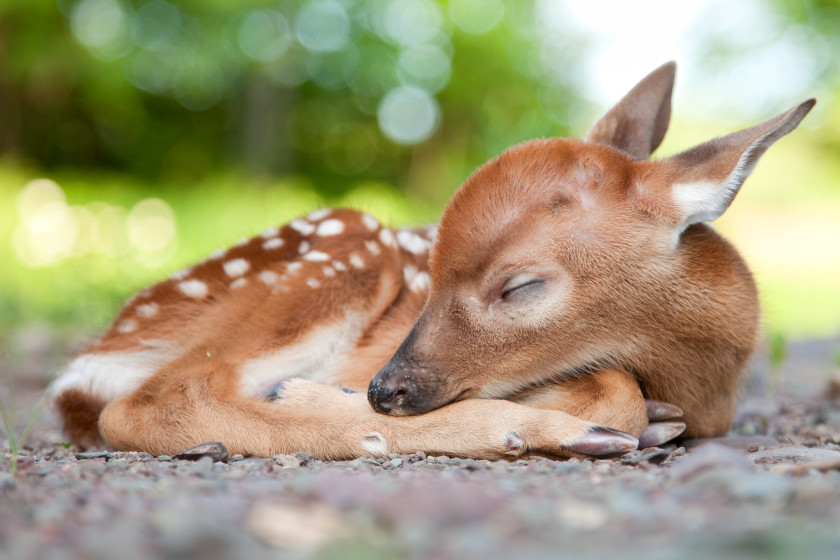
Terryfic3D via Getty Images
Because it's not uncommon to get trail camera photos that are timestamped at all hours of the day and night, it's not a stretch for some hunters to assume deer never get any shut-eye. However, this isn't true. Your typical whitetail's sleeping habits are very different from that of humans. According to the National Deer Association, deer sleep every day. The big difference is that they may only rest for a few minutes at a time. While they can sleep for hours, they usually don't sleep for more than 15 to 30 minutes.
This is a baked-in survival instinct. Whitetails are constantly looking for danger and cannot do that if they are always asleep. Deer usually stay on alert the whole time they are asleep. Even while dozing, their ears are constantly tuned for the sounds of predators. If you've never seen a sleeping deer, it's not surprising. They're nearly impossible to sneak up on in such a vulnerable position.
The NDA notes that deer sleep most often in short bursts during the day, which, if they're in thick cover, is also probably why we rarely get to see this behavior. While deer spend a ton of time in their beds every day, most of that time is spent chewing their cud. In an ideal scenario, the deer feeds quickly. Then they make their way back to a bedding area to chew their cud in the security of cover. This is when they may sleep for a short time before it's time to get up and repeat the eating and cud chewing process.
It should be evident to most hunters, but most bucks will sleep and eat very little during the rut. They're constantly looking for receptive does and often wander vast distances to find them. It's usually the only time of year deer break from their usual patterns and throws caution to the wind, which is why it's also the best time to hunt them.
Science shows deer are not nocturnal animals. It just seems that way because they are such shy and reclusive animals. However, the more you know about their daily habits, the more likely you are to unravel the secrets behind what makes an individual deer tick. And that makes you more likely to harvest the animal once deer hunting season finally starts.
For more outdoor content from Travis Smola, follow him on Twitter and Instagram. Check out his Geocaching and Outdoors with Travis YouTube channels for original videos.
